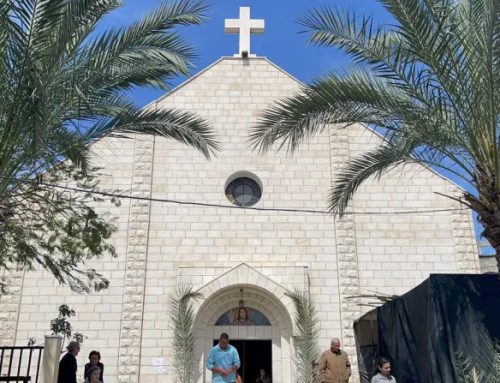Pressed against a wall in a back corridor of Jerusalem’s Church of the Holy Sepulchre, a stone slab bore testimony only to the graffiti etched on it by multitudes of pilgrims through the ages.
But the 2.5 x 1.5 meter stone turned out to be far more precious when its other side was exposed during recent renovations at the church, the traditional site of Jesus’s crucifixion and burial.
Researchers believe the elaborate looping ornaments they found on the long-hidden part of the slab indicate it was once the decorated front of a medieval high altar that took pride of place centuries ago in one of Christianity’s holiest sites.
“You cannot see it now, but originally it was inlaid with pieces of precious marble, pieces of glass, pieces of small, finely made marble,” said Amit Re’em, Jerusalem regional archaeologist for the Israel Antiquities Authority.
“It was shining and this was a really amazing artefact,” said Re’em, who conducted the research with Ilya Berkovich of the Austrian Academy of Sciences.
They identified the unique decoration method as “Cosmatesque”, which combines Classical, Byzantine and early Islamic art in which finely cut tiles of colourful marble are used to fill in circular engravings on the stone.
“It stood at the apex, at the sanctuary of the Church (of the Holy Sepulchre),” Re’em said.
“All the eyes of the believers, of the pilgrims, (went) to this object. And right above it and around it, all the high priests, the priests and the monks of the church did all the liturgy, the main liturgy of the church, on the table, right here on the table of this altar,” he said.
Archbishop Aristarchos of Constantina, the chief secretary of the Greek Orthodox Patriarchate of Jerusalem, welcomed such research at the church.
“Works from people of art, people of archaeology, contribute to us, contribute to the belief of the church, to the conviction of the church, that this is the place…on which Jesus Christ was crucified…buried and from which he came to resurrection,” he told Reuters.
https://www.nbcnews.com/






